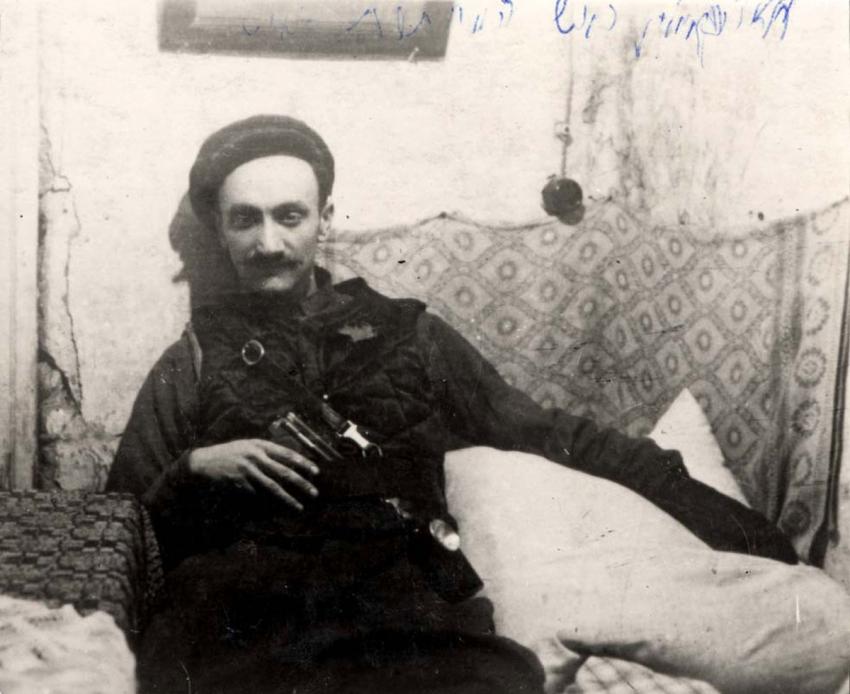Chaim Yellin in the apartment of underground activist Chaim David Ratner in the Kovno ghetto. He was wounded in his left arm when taking Jews who escaped from the Ninth Fort to the partisans in the forests. Three months later, Yellin was caught and murdered.

Chaim Yellin, a Yiddish writer and one of the heads of the Communist Underground in the Kovno Ghetto
Yad Vashem Photo Archives, 7003/154
Courtesy of Avraham Tory
Chaim Yellin was born in 1912 and was raised and educated in Lithuania, where he became a famous Yiddish writer and playwright. Although a Zionist in his youth, he later embraced communism. When Lithuania was annexed to the USSR in June 1940, Yellin was given a senior position in a State ministry. He was captured during the German invasion and imprisoned in the Kovno ghetto with his family and the other Jews of the city. He became active in the communist underground in the ghetto, and tried to establish contact with the partisans in the forests in order to organize for ghetto inmates to join their ranks. In late 1941, Yellin was appointed commander of the union of communist organizations in the ghetto, which stockpiled arms and ammunition with a view to an uprising.
In early 1943, Yellin's organization joined forces with the anti-fascist Lithuanian underground. Yellin made contact with communist partisans active in the Rudniki forest, and smuggled arms and ammunition into the ghetto. Under Yellin's leadership, during the winter of 1943-44 the ghetto underground raised funds, bought weapons, trained fighters and obtained vehicles for the purpose of smuggling groups out of the ghetto to the partisan bases in the Rudniki forest.
Yellin was caught by the Gestapo on 6 April 1944, interrogated and tortured. In order to avoid a general reprisal against the ghetto inmates because of his actions, he lied about his identity and presented himself as a Russian paratrooper. He was executed at the beginning of May 1944. He was decorated posthumously by the Soviet government for his partisan activities.
In 1977, Chaim Yellin's brother Meir submitted a Page of Testimony in his memory.
The photographer of the featured photograph, Chaim David Ratner, was killed in the ranks of the partisans in July 1944, shortly before the liberation of Kovno. In 1973, his brother Yaakov submitted a Page of Testimony in his memory.
The photograph was preserved by Avraham Tory, Kovno ghetto inmate and secretary of the Jewish Council in the ghetto. Tory maintained a diary in the ghetto which he buried underground. About 700 of its 1500 pages survived, and the diary was published in 1988. Tory survived in hiding after escaping the ghetto some four months before its liquidation. He immigrated to Eretz Israel (Mandatory Palestine) in 1947, and passed away in 2002.
In 1939 approximately 40,000 Jews lived in Kovno. Kovno was liberated on 1 August 1944. Less than 2,000 Jews from Kovno survived the war.
